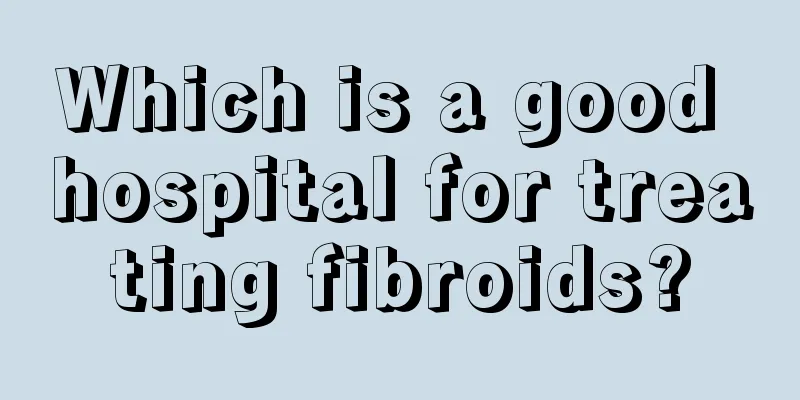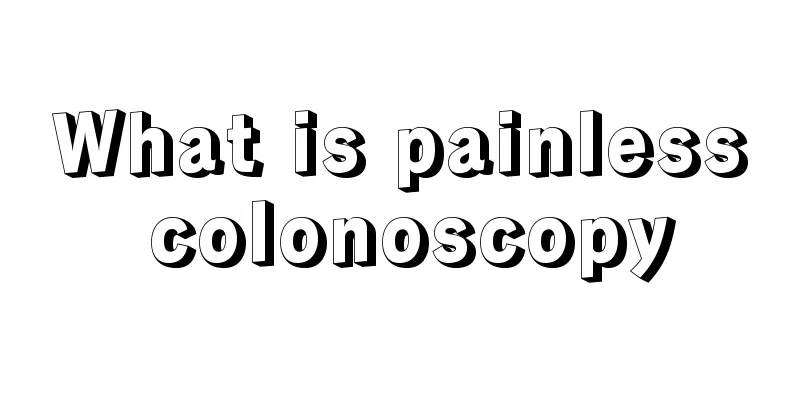What are the cardiopulmonary resuscitation techniques?

|
Because the patient's heart stops beating due to some reasons, cardiopulmonary resuscitation techniques must be performed in order to restore his vital signs as soon as possible. At present, the main clinical cardiopulmonary resuscitation techniques include airway control, including endotracheal intubation, cricothyroid membrane puncture, and tracheotomy; respiratory support, mainly artificial respiration; resuscitation medications, including epinephrine, antiarrhythmic drugs, etc.; and finally, cardiac defibrillation. 1. Airway Control (1) Endotracheal intubation: If conditions permit, endotracheal intubation should be performed as soon as possible because it is the best way to perform artificial ventilation. It can keep the airway open, reduce airway resistance, facilitate the removal of respiratory secretions, reduce anatomical dead space, ensure effective ventilation, and provide favorable conditions for oxygen supply, pressurized artificial ventilation, and intratracheal drug administration. When traditional endotracheal intubation becomes difficult due to various reasons, esophageal endotracheal intubation can be used for blind insertion to provide emergency oxygen to the patient. (2) Cricothyroid membrane puncture: In case of emergency laryngeal obstruction and severe asphyxiation, if there is no condition for immediate tracheotomy, emergency cricothyroid membrane puncture can be performed. The method is to puncture the cricothyroid membrane with a 16-gauge thick needle and connect a "T"-shaped tube for oxygen supply, which can achieve airway patency and relieve severe hypoxia. (3) Tracheotomy: Tracheotomy can maintain airway patency for a longer period of time, prevent or quickly relieve airway obstruction, clear airway secretions, reduce airway resistance and anatomical dead space, increase effective ventilation volume, and facilitate sputum suction, pressurized oxygen supply, and intratracheal drug instillation. Tracheotomy is often used for patients with oral, facial, and cervical trauma who cannot undergo endotracheal intubation. 2. Respiratory support It is crucial to establish an artificial airway and respiratory support in a timely manner. In order to increase the partial pressure of oxygen in arterial blood, inhalation of pure oxygen is generally advocated at the beginning. Oxygen can be inhaled through various masks and various artificial airways, with endotracheal intubation and mechanical ventilation (ventilator) being the most effective. The simple respirator is the simplest form of artificial mechanical ventilation. It consists of a rubber bag, a three-way valve, a connecting tube and a mask. There is a one-way valve at the back of the rubber bag to ensure that air can enter in one direction when the rubber bag is expanded; there is an oxygen inlet on the side, through which 10-15L/min of oxygen can be supplied. By squeezing the rubber bag manually and maintaining appropriate frequency, depth and time, the oxygen concentration of the inhaled air can be increased to 60%-80%. 3. Resuscitation medication The purpose of resuscitation medication is to increase blood perfusion to important organs such as the brain and heart, correct acidosis, and increase the ventricular fibrillation threshold or myocardial tension to facilitate defibrillation. The first choice for resuscitation medication is intravenous administration, followed by tracheal instillation. Commonly used drugs for tracheal instillation include epinephrine, lidocaine, atropine, naloxone and diazepam. Generally, the drug is dissolved in 5-10 ml of water for injection and dripped in a regular dose. However, the drug may be diluted by endotracheal secretions or need to be increased in dose due to poor absorption, usually 2-4 times the intravenous dose. Intracardiac injection is not recommended at present, because improper operation may cause myocardial or coronary artery tear, pericardial hemorrhage, hemothorax or pneumothorax, etc. Injecting drugs such as adrenaline into the myocardium may cause refractory ventricular fibrillation, and cardiac compression and artificial respiration must be interrupted when taking the drugs, so it is not suitable as a routine route. The following drugs are commonly used for resuscitation: (1) Epinephrine: Epinephrine causes peripheral vasoconstriction (except coronary arteries and cerebral blood vessels) through the stimulation of α receptors, which helps to increase aortic diastolic pressure, increase coronary perfusion and cardiac and cerebral blood flow; its β-adrenergic effect is still controversial because it may increase myocardial work and reduce perfusion of the subendocardial myocardium. For any type of cardiac arrest, the usual dose of epinephrine is 1 mg intravenously each time, repeated every 3-5 minutes if necessary. In recent years, some people have advocated the use of large doses, believing that large doses are beneficial to the recovery of spontaneous circulation. However, recent studies have shown that large doses of epinephrine do not improve the survival rate of cardiac arrest discharge, and may cause post-resuscitation complications such as myocardial depression damage. Therefore, the ideal dose of epinephrine during resuscitation needs further research and confirmation. If IV/IO access is delayed or cannot be established, epinephrine can be given intratracheally in 2 to 2.5 mg increments. The 2010 International Guidelines for Cardiopulmonary Resuscitation recommend that a dose of vasopressin 40 U IV/IO may also replace the first or second dose of epinephrine. (2) Antiarrhythmic drugs: Severe arrhythmia is one of the main causes of cardiac arrest and even sudden death. Drug therapy is an important means to control arrhythmia. The 2010 International Cardiopulmonary Resuscitation Guidelines recommend that transcutaneous pacing should be prepared promptly for high-degree blockade. Atropine 0.5 mg IV was given while waiting for pacing. The dose of atropine may be repeated up to a total of 3 mg. If atropine is ineffective, pacing is initiated. While waiting for a pacemaker or when pacing is ineffective, infusion of epinephrine (2-10 μg/min) or dopamine (2-10 μg/kg.min) can be considered. Amiodarone can be used when ventricular fibrillation and pulseless ventricular tachycardia are unresponsive to CPR, defibrillation, and vasopressors. The first dose is 300 mg intravenous/intraosseous injection, and a supplementary dose of 150 mg can be given. Lidocaine may be considered as an alternative to amiodarone (ungraded). The initial dose is 1-1.5 mg/kg. If ventricular fibrillation and pulseless ventricular tachycardia persist, repeat the intravenous push of 0.5-0.75 mg/kg at intervals of 5-10 minutes, for a total dose of 3 mg/kg. Intravenous magnesium push can effectively terminate torsades de pointes. 1-2g of magnesium sulfate is diluted with 10ml of 5% GS and pushed intravenously within 5-20min. 4. Cardiac Defibrillation Electric defibrillation is the most effective way to terminate ventricular fibrillation and should be performed early. Studies have shown that most cardiac arrests are caused by ventricular fibrillation, 75% of which occur outside the hospital, and 20% of people have no warning signs. For every minute of delay in defibrillation, the possibility of successful rescue decreases by 7% to 10%. Defibrillation waveforms include monophasic waves and biphasic waves, and different waveforms have different energy requirements. Adults with ventricular fibrillation and pulseless ventricular tachycardia should be given a uniphasic defibrillator with an energy of 360 joules per defibrillation, and a biphasic defibrillator with an energy of 120 to 200 joules. If you are not familiar with defibrillators, 200 joules is recommended as the defibrillation energy. Biphasic waveform defibrillation: Early clinical trials have shown that the use of 150-200 J can effectively terminate pre-hospital ventricular fibrillation. Low-energy biphasic waveforms are effective and terminate ventricular fibrillation as effectively or more effectively than high-energy monophasic waveforms. For children, the first dose is 2 J/kg, and thereafter 4 J/kg. After defibrillation, it usually takes 20 to 30 seconds to restore normal sinus rhythm. Therefore, CPR should be continued immediately after the shock until the carotid artery pulse can be felt. Continuous CPR, correction of hypoxia and acidosis, and intravenous epinephrine (which can be used continuously) can increase the success rate of defibrillation. |
<<: What is the reason for high serum alanine aminotransferase
>>: What are the uses of paraffin?
Recommend
What are the dietary health care measures for spleen yin deficiency
Spleen Yin deficiency not only occurs in adults, ...
The most feared thing for bad breath is this magical tea
Bad breath is really an embarrassing problem. Man...
What to eat to prevent colon cancer
As we all know, if we want to stay away from the ...
How to check the spread of kidney cancer
People may be a little afraid when talking about ...
What are the typical symptoms of neurosis?
Common causes of neurosis include genetics, socia...
Will my father's prostate cancer be inherited?
Prostate cancer is a common male disease. Patient...
Umbilical varicose veins?
Umbilical varicose veins are a very common phenom...
Chest reflexology zone
There are many acupoints on the chest, and these ...
Can I use Yifuwang if I have red blood streaks?
Yi Fu Wang is a skin medicine that is mainly used...
What is the reason for redness, swelling, itching and peeling around the eyes? Reasons that cannot be ignored
Common causes of redness, swelling, itching and p...
What to do if you have recurrent acid reflux? 5 methods to know
Gastric acid has a certain protective effect on p...
What does fungus negative mean
In life, there are many pathogens that cause infe...
The efficacy and function of sunflower
I believe that everyone must have seen sunflowers...
Soak your feet to relieve inflammation
Soaking your feet in hot water is a very relaxing...
What to do if your face looks bad
A bad complexion plays a very important role in d...









